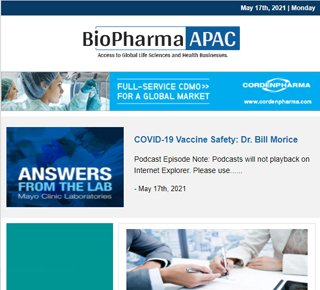Genes that Form Specific Bones In the Womb Heal them Later in Life
21 March 2023 | Tuesday | News

Image Source : Public Domain
Genes long known to control the formation of bones before birth also control bone healing later in life, a new study found.
Led by researchers at NYU Langone Health, a new study pinpointed key Hox genes, specific to each location in the body, as the controllers of stem cells involved in both forming and repairing bone. HOX proteins act like the body's "zip code," specifying the position of limbs in the fetus by encoding instructions for transcription factors, which attach to DNA and influence the action of genes.
Such adjustments guide immature stem cells as they multiply and mature in the womb, say the study authors, to become heart muscle, nerves, bones, etc., and in the right places. Bone is among the tissues that keep pools of stem cells on hand into adulthood, ready to mature into needed replacement cells that maintain healthy tissue and heal broken bones.
Published online recently in the journal Development, the new work found that Hox genetic programs in adulthood control a bone stem cell type called periosteal stem and progenitors cells or PSCPs. These cells play a central role in healing bones according to the womb-determined positions in which they first formed. Already known to encode the spatial code that sets the body's formation plan, HOX genes were shown in the study to give adult stem cells from different locations the properties needed to regenerate the particular bone in which they reside.
During aging, such stem cells become depleted, the researchers say, resulting in weaker bones that are more likely to fracture and slower to heal. In an effort to counter this loss in healing, the research team demonstrated that increasing the activity of the gene that directs the building of the Hoxa10 transcription factor in the tibia, the larger of the two "shin bones," in aging mice caused a 32.5% restoration of fracture repair capacity.
"Our data revealed a previously unknown function for Homeobox or Hox genes as essential location-specific regulators of stem cell maturity in adulthood, with short-term local increases in their expression able to drive healing," said corresponding study author Philipp Leucht, MD, PhD, the Raj-Sobti-Menon Associate Professor in the Department of Orthopedic Surgery at NYU Langone Health. "The therapeutic promise of adult stem cells as a source of bone-making cells in healing-compromised people is massive."
Bone Requires Attention
A fundamental question in the field has been whether bone healing is driven more by stem cells in the marrow in a bone's center, or by those known to pool in the nearby periosteum, the outer bone layer made of up tough connective tissue and cell-filled areas. Both stem cell types have the capacity to mature into osteoblasts, the cells that lay down new bone in response to a fracture, but the current study argues that stem cells in the periosteum, the PSPCs, are the important contributors to bone repair.
The study result builds on the understanding that, to keep stem cells pools on hand, they must get signals to continually divide and multiply without maturing, maintaining their "stemness" until needed. The body regulates bone repair by controlling the degree to which stem cells stay immature, with the most primitive cells playing the largest role in healing due to their flexibility and ability to quickly multiply.
In the current study, the researchers found that Hox deficiency leads to an increase in the stem cells' propensity to differentiate into mature bone cell types. Conversely, when the team increased Hoxa10 expression in tibia stem and progenitor cells, it reprogrammed them into a more stem-cell-like state, a needed step if they are to become new bone-making cells as part of healing.
Specifically, say the authors, PSPCs exist as a mixed stem cell population that includes those with the most stemness, naïve periosteal stem cells (PSCs), alongside more mature periosteal progenitor 1 (PP1s) and periosteal progenitor 2 (PP2s) cells. The current study authors found that Hoxa10 expression was most abundant in PSCs and was significantly reduced as cells progressed along the lineage hierarchy to PP1 and PP2. Experiments that increased the activity of the Hox genes in these more mature progenitors brought about a 3-fold increase of PSCs as cells were reprogrammed into a more primitive stem cell identity.
"PSPCs have distinguishing characteristics that form the basis for future cell-based therapies, including their greater tendency to naturally regenerate bone than many related stem cell groups," said co-corresponding lead author Kevin Leclerc, a post-doctoral scholar in Leucht's lab. "By modifying Hox activity in these cells, we can help them regenerate bone more effectively in individuals with deficient bone-healing capacity."
Along with Leucht and Leclerc, study authors from the Department of Orthopedic Surgery are Lindsey Remark, Malissa Ramsukh, Anne Marie Josephson, Laura Palma, Paulo EL Parente, Margaux Sambon, Sooyeon Lee, Emma Muiños Lopez, and co-senior author Sophie Morgani. The study was funded by National Institutes of Health grants R01AG056169, K08AR069099, S10OD010751, 5P30CA016087 642, and P41 EB017183, as well as by Perlmutter Cancer Center support grant P30CA016087, the Patricia and Frank Zarb Family, and the CTSI TL1 post-doctoral scholarship of the New York Stem Cell Foundation.
Most Read
- Bridging the Vision Gap: Roche’s Ahmed Elhusseiny on Eye Health Priorities in Asia Pacific
- How Merck’s India-Based Navi Mumbai Centre is Reimagining Formulation Science for the Global Generics Market
- Advancing Cell & Gene Therapy in APJ: How Thermo Fisher Enables Breakthrough Innovation
- AstraZeneca’s Vision for Chronic Kidney Disease: Sylvia Varela on Transforming CKD Care in Asia
- ACG Leads the Charge in Vegan Capsules: Innovation, Certification, and the Future of Sustainable Pharma
- ORA’s Hybrid Model Reshapes Obesity Care: Dr. Ben Ng on Bridging Telehealth and In-Person Treatment
- Heather Hargett on How Merck’s HUB Organoids Acquisition is Reshaping 3D Cell Culture and Drug Development
- Health2Sync's Vision for Diabetes Care: Transforming Outcomes Through Technology and Partnerships
Bio Jobs
- Ravindra Rao Joins GOBI Technologies as Director of Life Sciences – APAC
- Amgen Announces $900 Million Expansion of Ohio Biomanufacturing Facility, Boosting Investment to Over $1.4 Billion
- Thermo Fisher Scientific Appoints Former CVS Health CEO Karen S. Lynch to Board of Directors
- Merck KGaA Reshapes Leadership for the Future with Key Executive Moves
- Aarian Health Appoints Thomas Keller as Business Director to Drive Innovation and Growth
- Top Management Shakeups of 2024: Redefining Pharma, Biopharma, and Biotech Leadership
News
Editor Picks











